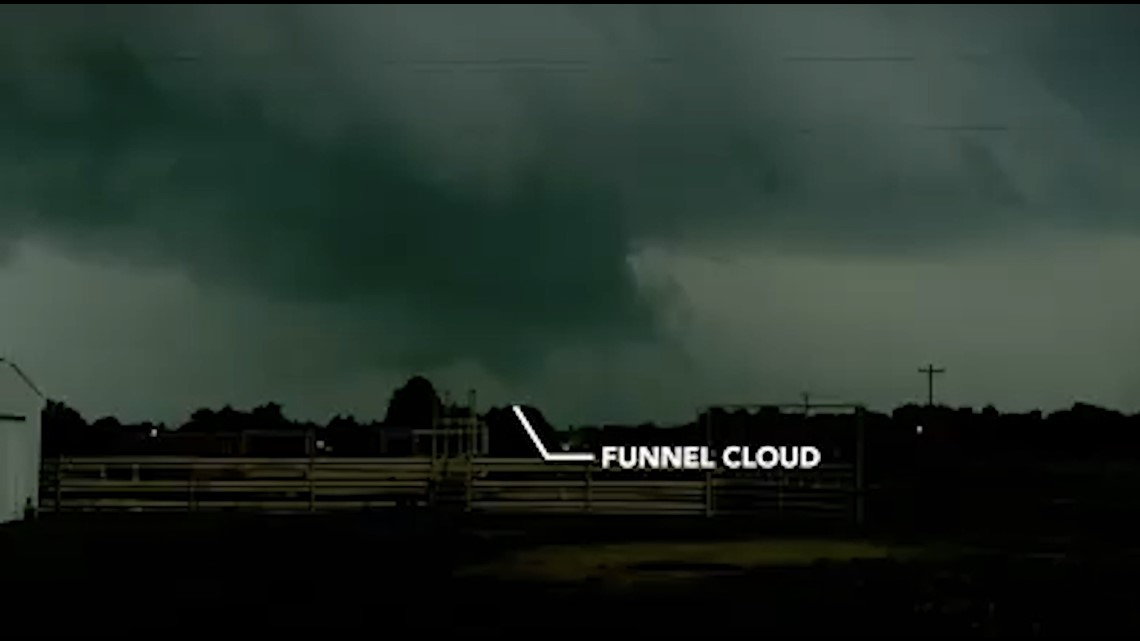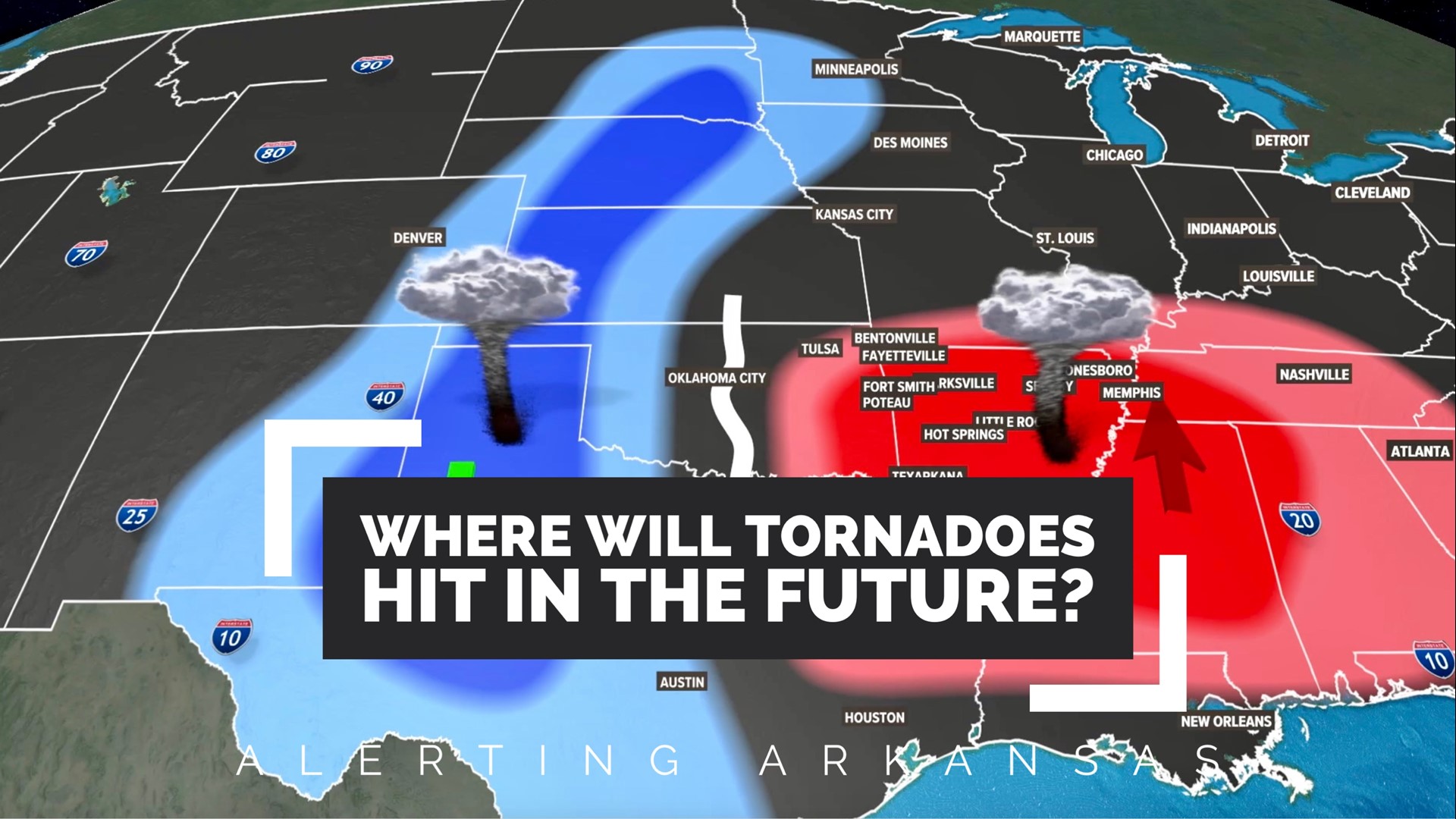ARKANSAS, USA — Will tornadoes touch down more frequently in the future? There is new research suggesting that may be the case, but only in certain areas of the United States.
The South has seen an increase in severe weather over the past several years, especially in the late winter months. Warmer winter days with lots of humidity from the Gulf of Mexico help spell disaster when cold fronts finally do arrive.
How will this trend continue? How will the nature of supercells change over the next 75 years, especially for Arkansas?
In January 2023, Meteorologist Walker Ashley, PhD. from Northern Illinois University completed research on how the supercells change spatially and temporally across the United States. We interviewed him to see what he found specifically for Arkansas.
Supercell vs. QLCS tornadoes
There are generally two types of tornadoes that we get in the South, supercell tornadoes and QLCS tornadoes.
Supercells are rotating thunderstorms, the classic mechanism to create a tornado. These storms produce the majority of violent tornadoes. However we can also get very quick, spin-up, rain-wrapped tornadoes on the leading edge of squall lines, or QLCS (quasi-linear convective system). These tornadoes can be strong, but many times they are brief and fast-moving. A lot of times these have just low-level rotation and do not last a long time.
Dr. Ashley and his team mainly studied supercell tornadoes because they are easier to model.


How the research was conducted
Dr. Ashley and his team studied how rotation 5-15,000 feet above the ground, or the updraft helicity. Forecast models can try to predict where pockets of updraft helicity may form on a severe weather day. Using this, the researchers added more heat and moisture to the climate, due to the warming climate we have seen and may see for the rest of the century.
QLCS tornadoes are generally lower in the atmosphere, many times with a rotation below 5,000 feet. These are harder to detect and model. However, Dr. Ashley and his team hope to model these better in the next few years.
Specifically for the warming, Dr. Ashley used a future with a 4.5-degree warming, and an 8.5-degree warming. The latter is a much more pessimistic outlook for the future. Dr. Ashley stated that the 4.5-degree warming is probably more realistic.
How will the number of tornadoes change over time?
The researchers found an increase in rotating supercells east of the continental divide, or near I-35. Areas to the west saw a decrease in supercells with hotter and drier weather. Areas to the east saw an increase in supercells with more humidity and warmer weather.


The greatest positive increase was seen in Arkansas over the next 75 years. Instead of 1-2 supercell days, there may be 2-4 supercell days in a year.
Is the time of year for tornadoes changing?
The increase in supercells in the Mid-South is generally seen in February, March, and April, with May steady as a severe weather month. On the flip side, there may be a decrease in the summer months for supercells, more heat and less rotation.
Late winter may become stormier with more supercells.
More Alerting Arkansas:

